Wind Poems And Hunting Haikus
Birds have their own ways of praying, as you no doubt have yours. *
“A poem should always have birds in it.” ― Mary Oliver, House of Light
“Stand up straight.”
Bad advice. Terrible, really…
…if you’re on a battlefield with bullets flying in all directions.
…if you awake within a dream while standing atop a speeding bullet train about to enter a tunnel.
…if you are in the presence of exquisite, shy, hungry birds who really just want to get on with their food gathering and poetry compositions.
So I knelt,
until my foot and leg fell asleep.
Then I sat.
In the dirt and weeds, the wind-piled sticks and dried flotsam near the edge of a pond, twenty miles from the nearest town and less than ten miles from the Mexican border. I sat while the sporadic winds tugged at my wide-brimmed hat in hazy, late afternoon sunlight, while insects hatched and rose haphazardly from their aquatic nurseries to enter into the next, fleeting stage of their mysterious lives during brief lulls in the buffeting, dry, warm gusts.
A romantic stage? Perhaps. Partner seeking partner, at the very least.
How do they know?
How, from within the surface film or below it do they know when the wind will pause? How do they understand, having never flown before how to wait until the proper moment, then race to the surface with enough speed and momentum to break that clingy, surface tension and escape the water’s bonds?
There’s a helluva lot of awareness, timing, motor-skill, coordination and hard-wired intelligence, all humming in first-ever attempts to transition from aquatic lifeform to winged, airborne sex gods and goddesses.
We grow up, most of us, thinking of insects as mindless, almost non-beings and yet each of us, when we were learning to stand upright and walk, failed hundreds of times before we finally pieced all of the elements together, bit by bit to achieve intentional, albeit, wobbly motion. It takes us a thousand progressive tries to learn to stand, walk and then run.
Imagine having just one chance to get it right. Consider the necessary, innate understanding of complex physics: speed, momentum and the sticky bonds of water molecules; surface tension. The direction and timing. The conveyance of newly unfolded wings. And in the midst of all this, also switching over to an entirely new way of breathing.
It’s not that we aren’t smart. It’s just that we aren’t so much smarter than other life forms that we do our own lives justice by underestimating theirs, or by taking them for granted.
There are new enemies in this new world, above.
Some of the finned creatures that hunted those new fliers in their ‘before’ lives in the world below are still intent on their capture and demise, and willing to leap completely out of that familiar, sustaining, watery world and into the air to pull an escapee back, to claim its newly airborne life force as a meal to sustain their own. But in this new world there are birds too, immense, colorful, feathery beings with wings that move in the wind and against it, fluid observers, decisive composers. voracious troubadours.
I sit low to the ground, as unimposingly as I can manage trying to take all this in.
There aren’t many humans here. Twice though I am interrupted by others who observe me sitting there, down the beaten slope a bit from the trail and bench, and assume that I must see or know something they don’t. The first, standing fully upright in all of her grand humanity walks right up behind me while I am attempting to frame up a photograph of the exquisite, Vermillion Flycatcher who had gradually acquiesced to my not-too-threatening presence in his namesake (flycatcher), hunting grounds and gone back to his gusty, acrobatic, bug-nabbing sorties.
“WHAT ARE YOU LOOKING AT!” she demands in a voice that says she’s used to being paid deference.
Eye still glued to viewfinder I raise a hand for her to stop talking, which she does for the length of a hiccup.
“OH, WHAT A PRETTY RED BIRD!” she blurts as he quickly wings off to someplace where she is not. “WHAT KIND OF BIRD IS THAT!”
I turn around and cast her the look she deserves. She either ignores it or is clueless.
“WHY ARE YOU SITTING IN THE DIRT LIKE THAT?”
It is a statement born of arrogance, a put-down, a judgement masquerading as an innocent question. I cannot pretend to encourage her pretense, do not wish to reward her rude behavior.
“He was a Vermillion Flycatcher.” I answer in a quiet voice. “It took several minutes after I nestled in here for him to decide I was little threat and come back to his favorite perch. If I had stood here, upright, the way you are, he would never have come so close. That posture is perceived as a threat to birds, you see.”
“And talking loud is even worse.”
I turn back toward the reedy shallows. She seems to piece together that we are not about to become friends and that I do not accept her as my superior. Her demands will not win her the consideration she hoped to claim or satiate her momentary, half-curiosity. I hear the crunch of gravel as she reaches the nearby path and wanders emphatically away toward someplace that I am not.
Within a few minutes my skittish, vermillion friend has returned, which tells me that despite the added complexities of one, low-to-the-ground, human observer this hunting ground is much better than the one he’d disappeared to when ‘Madame Insouciance’ barged onto the scene. Flying insects, most, nearly invisible to my aging eyes, rise into the quieting air from the shallows with each new, momentary calm.
After a few dozen sorties I notice that the flycatcher seldom leaves his swaying perch while a wind gust is buffeting, opting instead to wait for the still air within which those insects begin again to flutter heavenward, but often then must find a way to reclaim said reed in a swirl or crosswind that suddenly came up while he was aloft.
And this, this is where the poetry appears. Where wings flare and cartwheel, attempts to reclaim a safe foothold by grasping that one swaying, broken reed while maneuvering a roiling river of air.
I change tactics, stop trying to capture this winged maestro just as he takes off and instead, focus the camera on his empty perch and wait for his return. As soon as he reappears within the frame I squeeze the shutter release to fire off three or four quick exposures and occasionally manage to capture one new motion poem with its author in frame and in focus, or nearly so, even as it is being written.
Another, better behaved human appears behind me. Stands a few feet forward of the bench while her patient husband, a retired law-enforcement officer from South Dakota, takes a seat. They natter at one another in a tone and cadence carved smooth over decades, but in kind, low voices. She bends forward like a scoliosis patient, cradling her 60x-lensed Nikon ‘all-in-one,’ and peers through the viewfinder. Click-click, click-click. Mr. Flycatcher moves to another perch ten feet farther out.
I’ll try this again, later, I decide after a few unproductive minutes with her standing mostly upright, ten feet behind me and grunt my way onto my knees, only to awaken, then, my tingling, pincushion feet. I must wait a minute before moving further. She smiles, sheepishly. I ask how her knees are; explain once again how much closer the birds seem to come when I minimize my silhouette, abandon my imposing human posture.
“Oh, I could never do what you just did,” she chuckles nervously, fidgeting with her camera strap. “Why, I’d never get back up.”
She is shy. And kind. Her husband considers me without needing to intercede. Seems pleased with the attention I’ve offered her. Nods as I walk past.


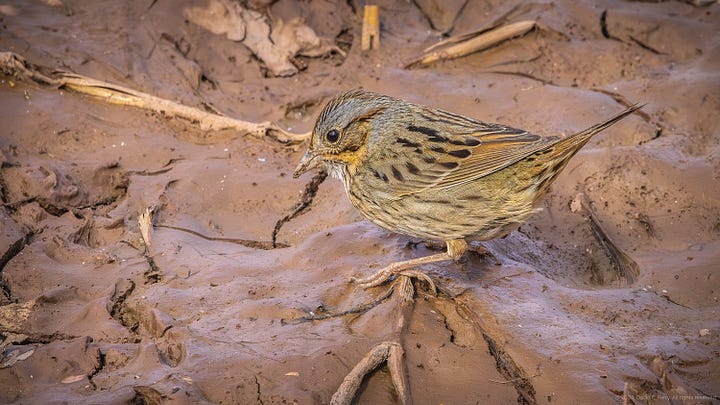

A half hour later, after friendly encounters with a fairly calm, poetic, Black Phoebe, a wading, American Avocet, a mud-foraging Lincoln’s Sparrow, a wary Loggerhead Shrike, half a dozen, dabbling, Northern Shovelers and a watchful, Great Horned Owl, I very calmly make my way back to my previous post among the sticks and dried mud, a few feet from water’s edge, there to settle in, once again, hoping for a few more poems.
The winds are still gusting and the light has improved, the sun having moved lower to the horizon. I look out across the water, watch a few winged insects rise and dance on the breezes and within minutes my balletic bird friend reappears, alighting upon his same, favorite perch, while a more pastelline, female flycatcher settles onto a reed farther out.
Twice he lifts off and goes to her, fluttering above her while the two of them seem to argue, which leads me to wonder whether in fact they are players on the same team or rivals, or if in fact they are still working that out. She lifts off in a strong gust and lets it carry her elsewhere. He returns to his broken reed and seems completely unconcerned by my telephotoed presence.
He continues to hunt within the calms, and continues to ride those swirling gusts back to his lookout post.
I shoot maybe another two dozen frames, managing only a couple more ‘keepers’ while the sun dances between racing clouds.
And then a delightfully long-tailed, Song Sparrow, who thinks and hunts quite differently from any flycatcher enters this scene and begins methodically working his way from one broken reed to another, within this same, sometimes tumultuous, water-bottomed, swirl of fragrant air, deftly writing his own, unique, more probing sort of poems; emergent and clinging insects hiding in the reedy cracks and crevices near the water line. Hopping, swaying, nabbing, tilting …and then, regaining balance.
I wish for, but am unable to capture an image of both birds composing in the same frame. It does not matter.
I am alone with these feathered artists, finally, in a faraway place, sitting in the dirt, reveling in warming pockets of backlit sunlight, afraid of nothing anywhere that I can see or hear…
and utterly in awe.
Birds composing poems of fascinating subtlety.
Student crushing hard on his teachers…
“I have my way of praying, as you no doubt have yours.” Mary Oliver.
*From the subhead. In grateful deference to Mary Oliver




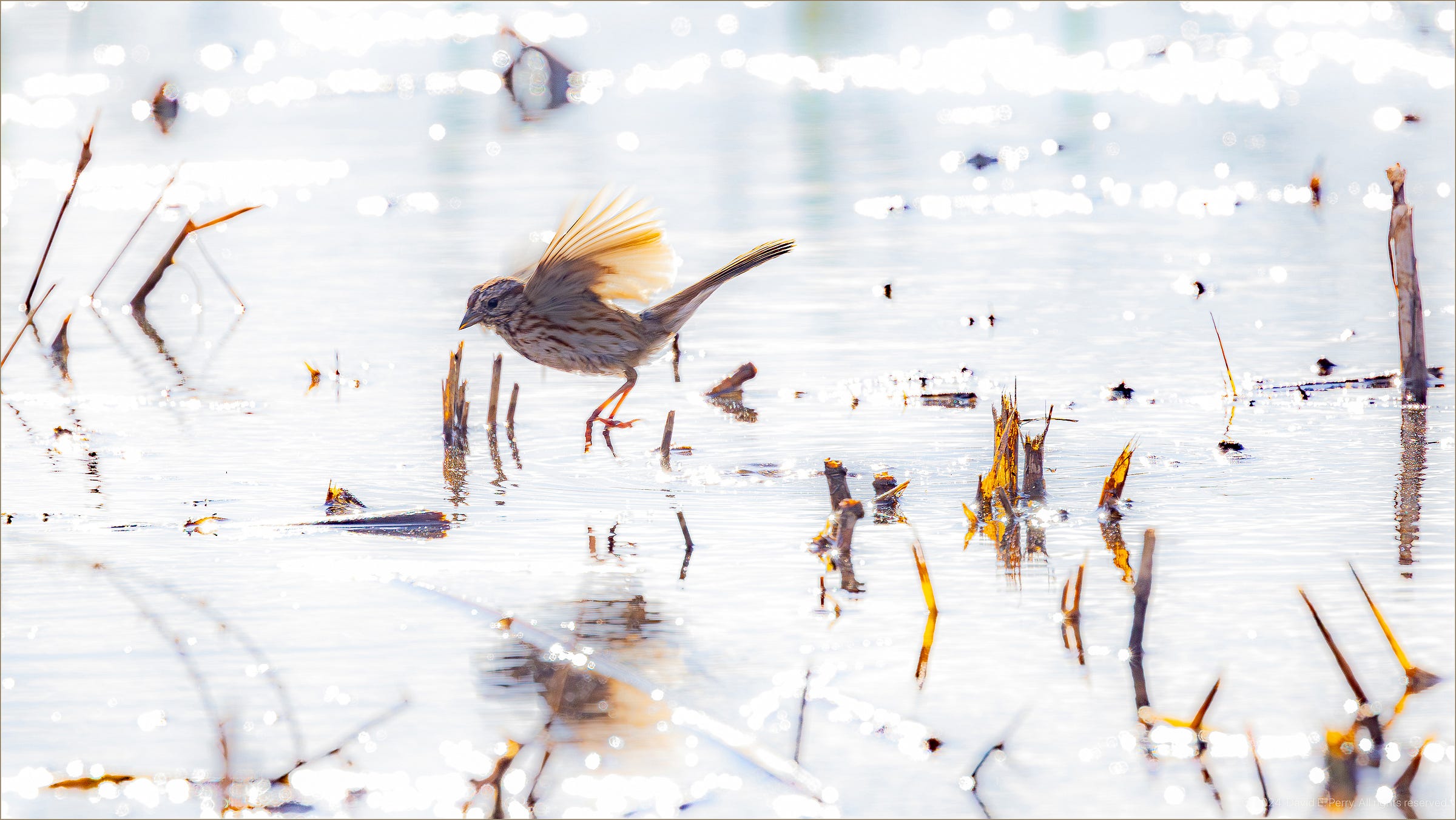

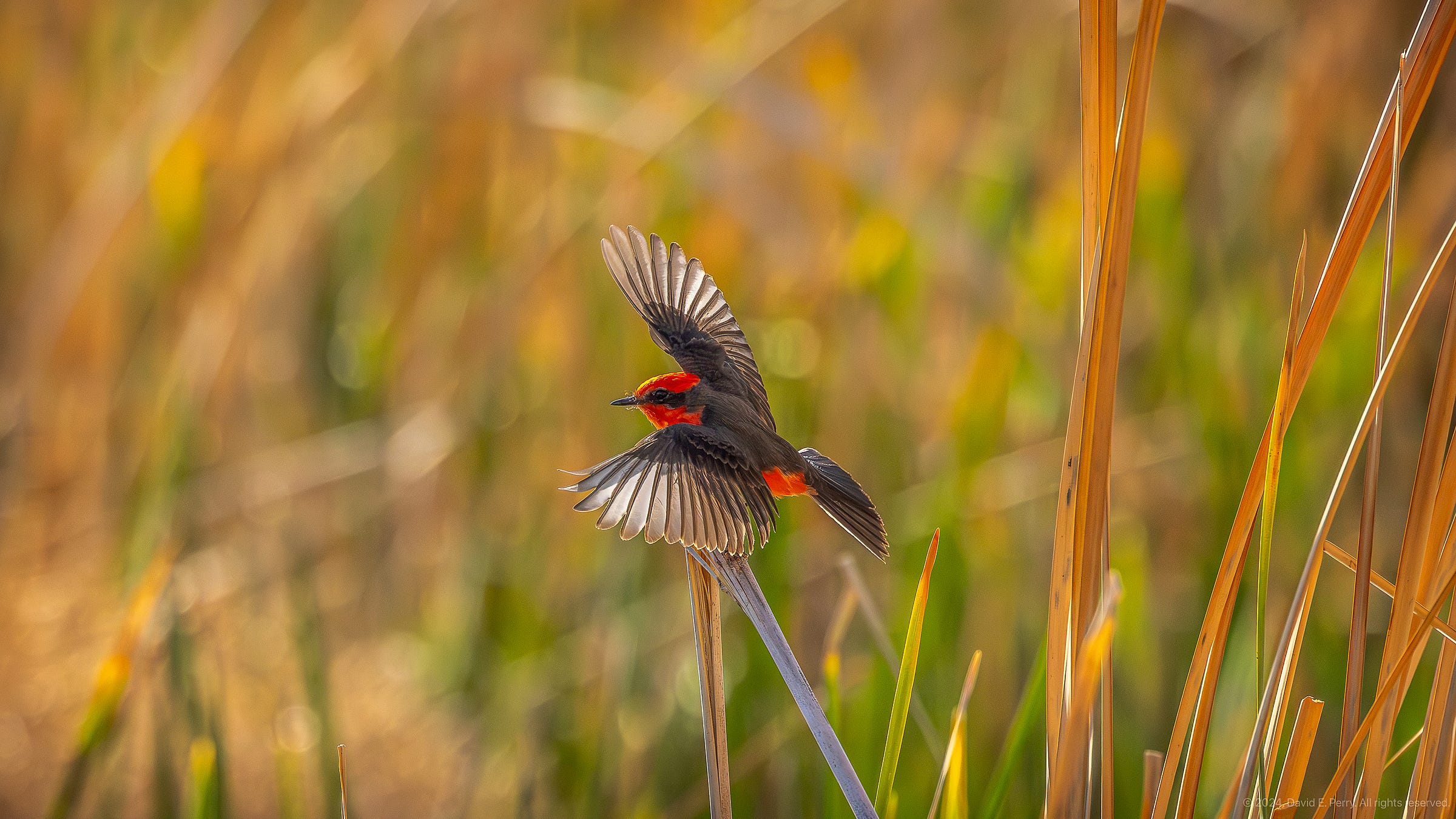
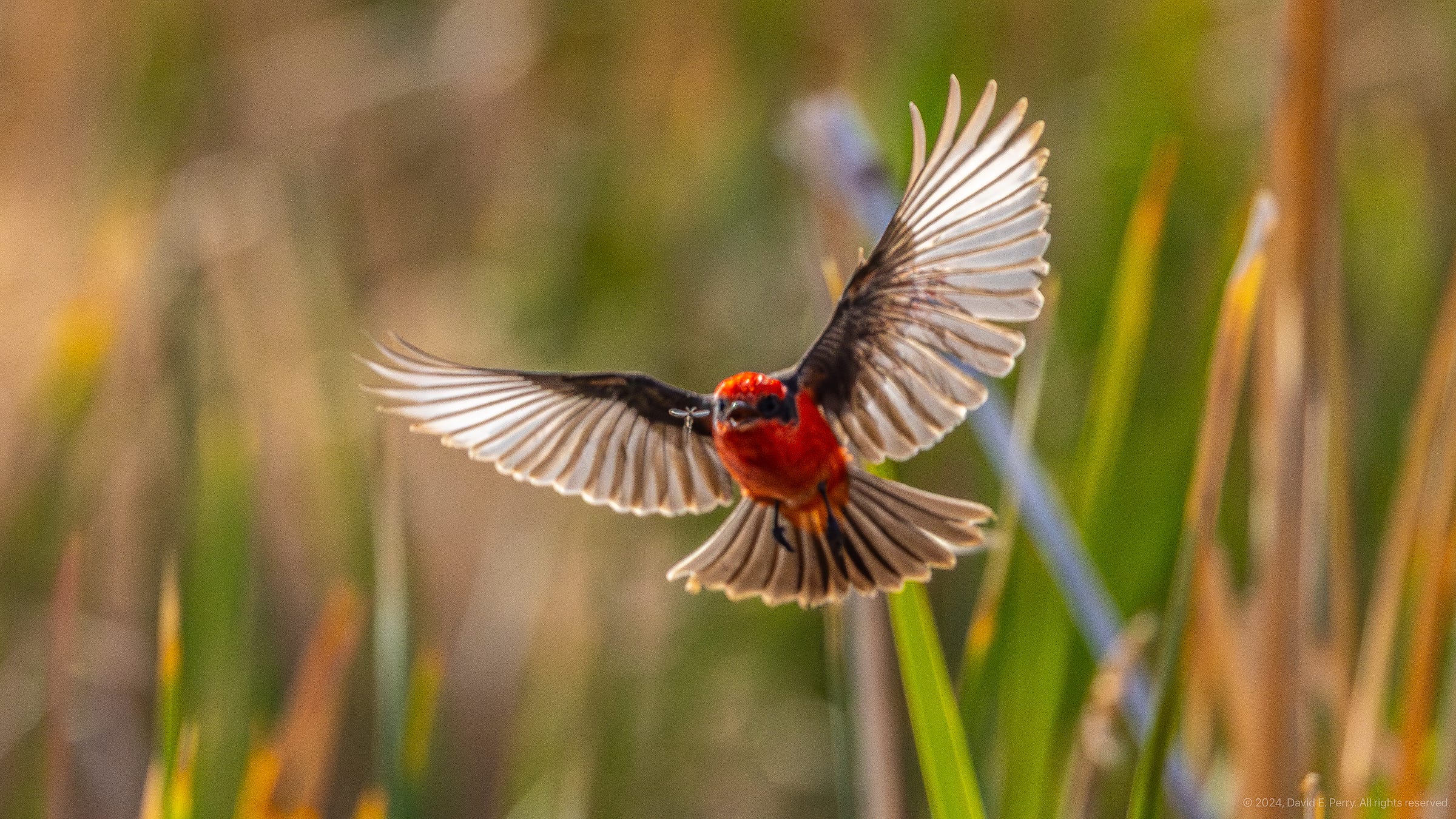
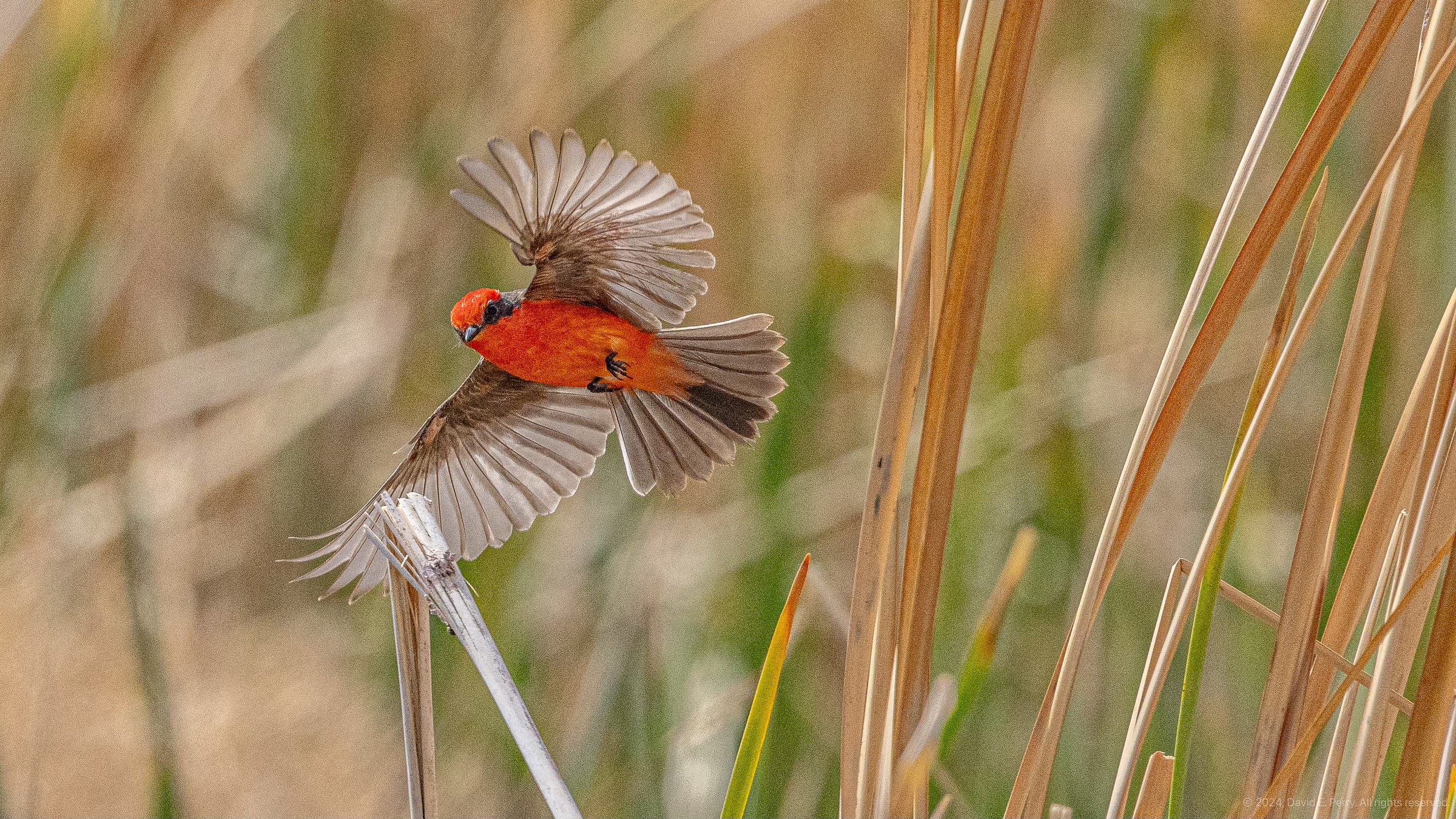
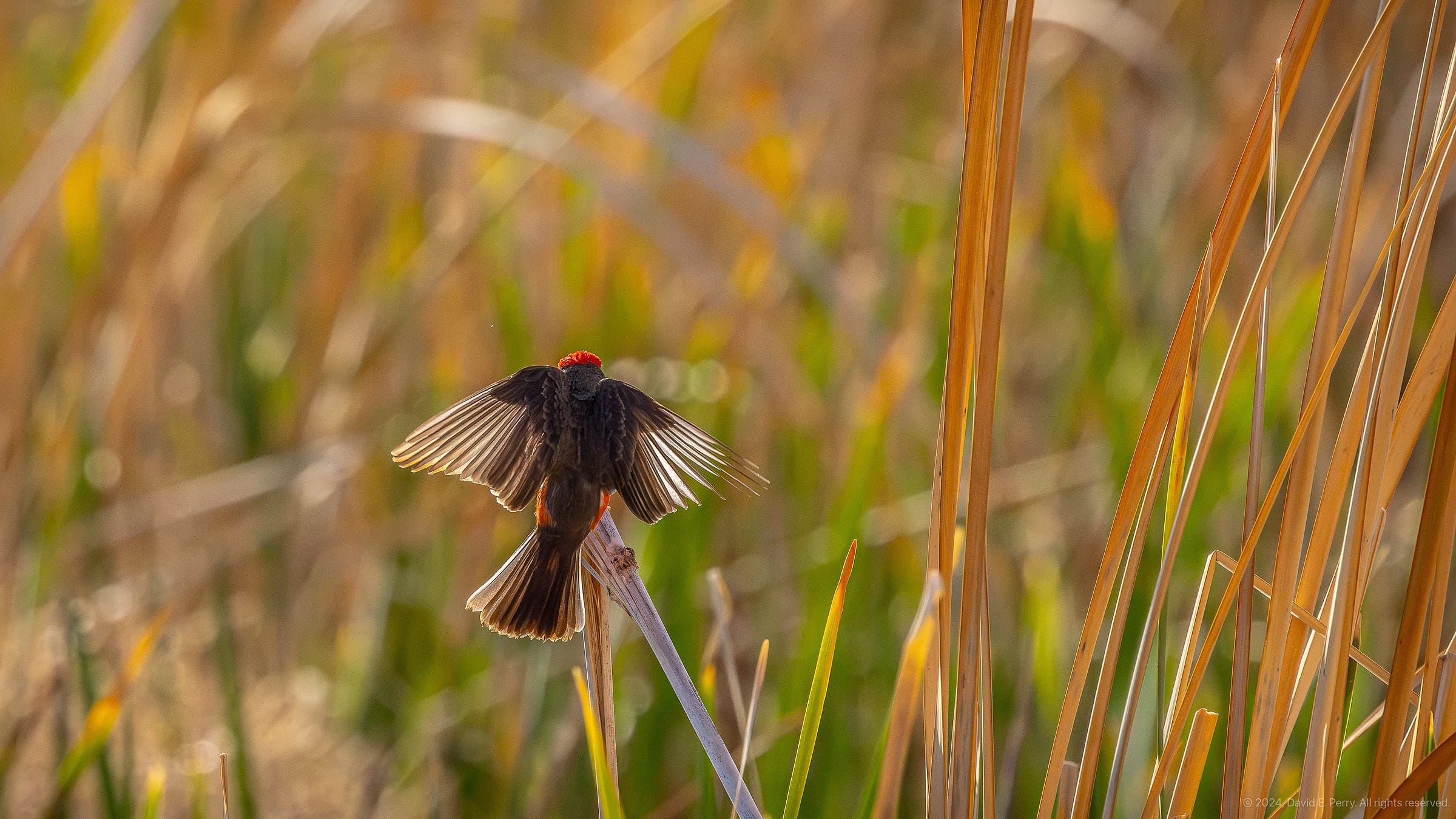

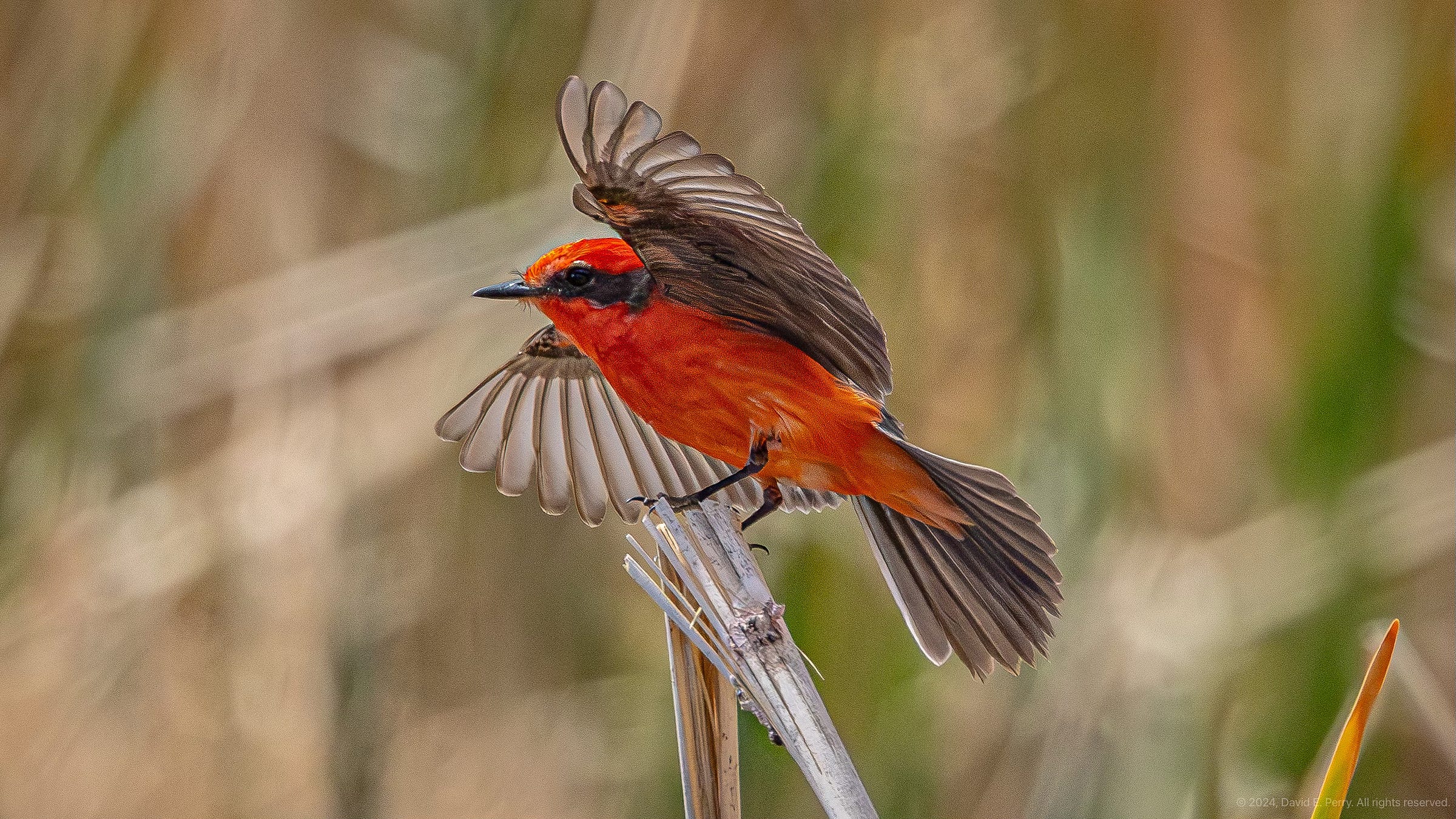
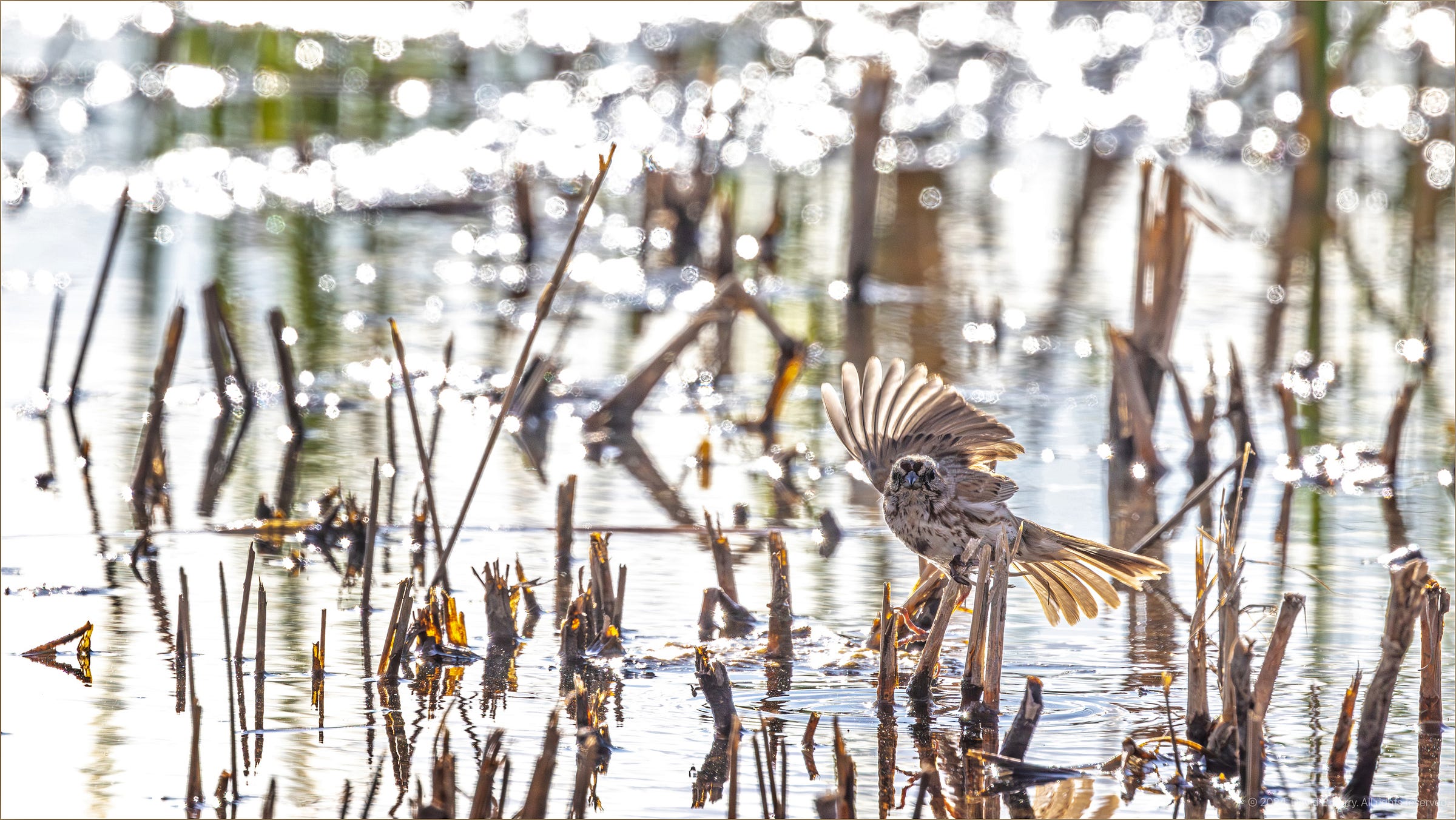
Stunning photos. They glow with the inner light that animates such exquisite beings. The fanned wing feathers particularly caught my heart. Thank you for this.
I absolutely love how you observe and comment on both the exquisite natural events you capture (in ways only you see) and the human interactions around you. Thank you for sharing this.